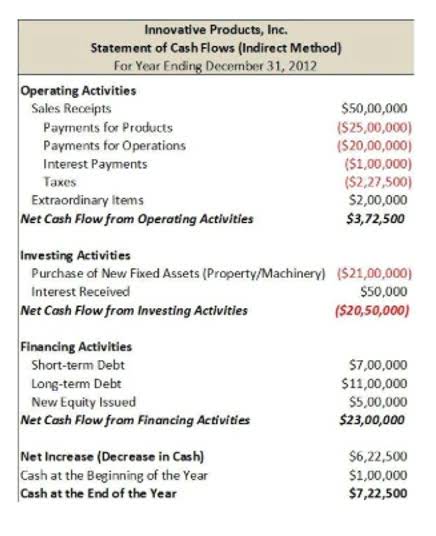Debit vs credit in accounting: Guide with examples for 2025

Review activity in the accounts that will be impacted by the transaction, and you can usually determine which accounts should be debited t accounts debits and credits and credited. The debit increases the equipment account, and the cash account is decreased with a credit. Asset accounts, including cash and equipment, are increased with a debit balance. For accounting and finance students, T-accounts are like training wheels on their financial literacy journey. They act as a bridge between theoretical accounting concepts and practical applications. Transactions are then recorded on the left (debit) or right (credit) side of the T, reflecting increases or decreases in that element.
What are T-Accounts? A Beginner’s Guide with Examples
Perhaps you need help balancing your credits and payroll debits on your income statement. Debits increase your expense accounts because they represent money going out. For instance, when you pay your employees, you debit the expense account to show the outflow of cash for wages. Errors in T accounts can be corrected by analyzing transactions and identifying discrepancies.

Discover more from Accounting Professor.org
A current asset representing the cost of supplies on hand at a point in time. The account is usually listed on the balance sheet after the Inventory account. The book value of a company equal to the recorded amounts of assets minus the recorded amounts of liabilities.
The Dashboard & Reporting Tool for Spreadsheet Data

Adding all the transactions together will give you the account Record Keeping for Small Business balance. For example, if you add $1,000 of cash coming in (a debit), with $500 cash going out (a credit). It’s true that you can make a T account for any account but let’s take an account like cash. If you were to get cash coming in, you would add it to the debit side of the “T” account. If your business is paying money out, then you would subtract to the credit side.

The general ledger is a core component of accounting that serves as a central repository for all financial transactions. Having control over your finances means understanding these fundamental concepts. It allows you to confidently analyze your financial statements and make informed decisions. For more detailed examples of how to use T-accounts in accounting, check out our sections on journal entry examples and journal entry sample.
Janet Berry-Johnson, CPA, is a freelance writer with over a decade of experience working on both the tax and audit sides of an accounting firm. She’s passionate about helping people make sense of complicated tax and accounting topics. Her work has appeared in Business Insider, Forbes, and The New York Times, and on LendingTree, Credit Karma, and Discover, among others. For those looking to streamline their workflow even further, tools like Bricks can be incredibly beneficial. Bricks integrates spreadsheets, docs, and presentations into one seamless tool, with AI at its core. It can handle everything from writing formulas and cleaning data to creating visuals like dashboards and reports.
Debits and Credits Example: Sales Revenue
Welcome to the realm of debits, credits, and T-accounts – the language of accounting. For different account types, a debit and a credit may increase or decrease the account value. Increases and decreases of the same account type are common with assets. Cash assets will decrease and equipment assets will increase. Transfers from one cash account to another are also recorded in the same category, but in separate sub-accounts.

How are T-accounts used in accounting?

In the journal entry, Accounts Receivable has a debit of $5,500. This is posted to the Accounts Receivable T-account on the debit side. This is posted to the Service Revenue T-account on the credit side. This is posted to the Equipment T-account on the debit side. This is posted to the Accounts Payable T-account on the credit side.
- This knowledge empowers you to make informed decisions that drive growth and success while minimizing risks.
- Recording what happens to each of these buckets using full English sentences would be tedious, so we need a shorthand.
- Liability T accounts represent obligations the company must settle, such as loans, accounts payable, and accrued expenses.
- As such, your account gets debited every time you use a debit or credit card to buy something.
- Whenever cash is received, the asset account Cash is debited and another account will need to be credited.
- Now, the left side of the T is for debits, and the right side is for credits.
Where accounting meets business reality – what’s it all for?
- Likewise, accounts with a credit balance, like liabilities, will always increase when another credit is added to the account.
- T-accounts cannot perform sophisticated financial analysis techniques, such as ratio analysis, variance analysis, or scenario modeling.
- Business owners can easily spot the nature of transactions and track the balance and movements of each account.
- For instance, when a company sells products worth $5,000, the accounts receivable account is debited, and the sales revenue account is credited to reflect the income.
- Assets and expense accounts are increased with a debit and decreased with a credit.
- Your debits go on the left, credits on the right side and the line down the middle separates them.
T-accounts are used to track individual account balances and transactions, while trial balance summaries are used to ensure the overall accuracy of a company’s financial records. As you can see, my bank account (an asset account) is debited £2.50, increasing its value. My income account (revenue account) is being credited £2.50, increasing its value, making the transaction balanced.
